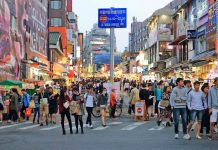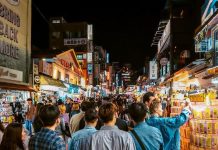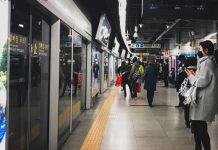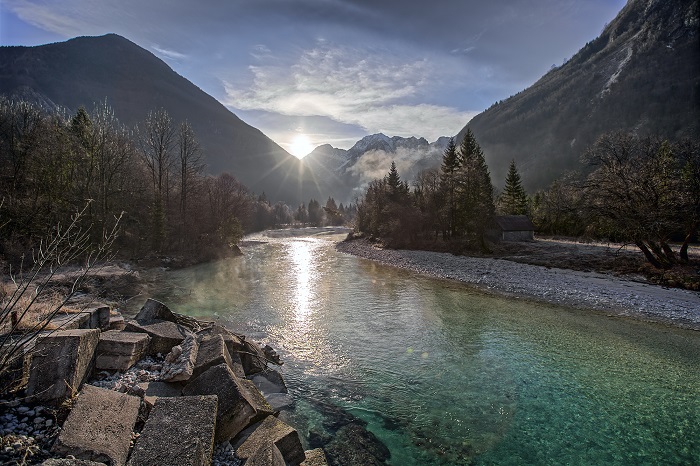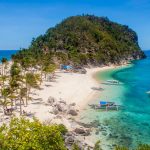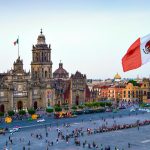Slovenia is not a popular tourist destination, so there is not much online Slovenia travel guide as well as tips. The guide that we share in this article will definitely be very useful in your upcoming trip. So, is Slovenia worth visiting, how to visit Slovenia, what to do in Slovenia and how to plan a budget trip to Slovenia for the first-time perfectly? Let’s check out our Slovenia travel blog (Slovenia blog) with the fullest Slovenia travel guide (guide to Slovenia, Slovenia tourist guide, Slovenia guide) from how to get to Slovenia, best places to visit, best time to come, what to eat as well as top things to do in Slovenia to help you maximize your trip as follows!
- Ljubljana travel blog — The fullest Ljubljana travel guide & what to do in Ljubljana for first-timers
- Lake Bled blog — The ultimate Lake Bled travel guide & what to do in Lake Bled
- The ultimate guide to Hongdae. Seoul’s HOT Shopping, Dining & Entertainment Neighborhood
- Hongdae travel blog — How to visit, what to do in Hongdae & what to eat in Hongdae?
- 15+ most famous & best temples in Korea



When traveling to Europe, which countries do you usually choose? Surely many people will choose famous countries such as Italy, France, Spain, Germany… However, did you know that besides famous and large countries like Italy, France has a small country that will bring you great experiences that is Slovenia.

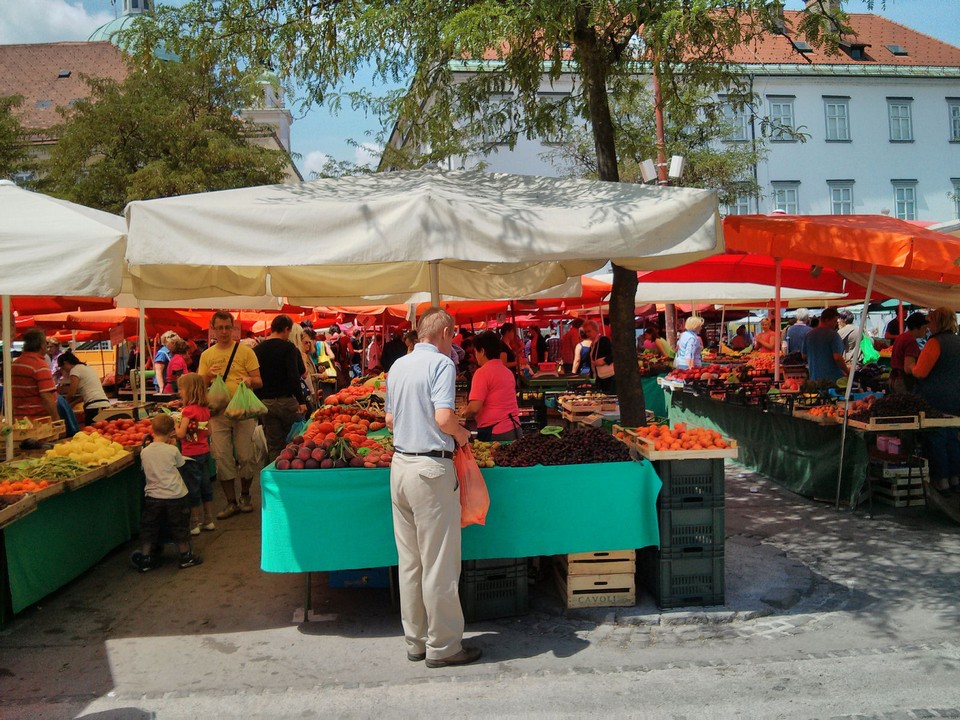
Although Slovenia is not as luxurious, splendid or spectacular, magnificent as other countries in the Europe. But with a lot of impressive natural scenery, always cool fresh air, friendly and hospitable people, a trip to Slovenia will definitely bring you memorable experiences. And before you go, don’t forget to read the guide through Slovenia travel blog that we share below.
Overview of Slovenia (#slovenia travel blog)

Slovenia is known as a small country located in South Central Europe. This country has the full name of the Republic of Slovenia. Slovenia is bordered to the west by Italy, to the south by the Adriatic Sea, to the north by Austria, to the southeast by Croatia and to the northeast by Hungary with an area of about 20,273 square kilometers and a population of over 2 million people.




Slovenia is a beautiful country and there is so much history, culture and attractions to exist in such a small country. From the towering snow-capped peaks in the north, to the beautiful Mediterranean coastline, bright turquoise rivers to stunning azure lakes, Slovenia is a nature lover’s paradise.
Slovenia has an area of 20,273 square kilometers and a population of just over 2 million, making it one of the smallest countries in the European Union. For such a small country, this country has great geographical diversity, with high mountain peaks in the north and west, and coastal plains in the south. Slovenia is a unique country that will delight and love you. You can step back in time when visiting its many medieval castles, have a beautiful adventure on and around its lively lakes, or indulge in eco-friendly innovations and local traditions in small communities.

When to come? (#slovenia blog)
Slovenia is a country with a fairly stable climate and nothing unusual all year round. Therefore, you can visit Slovenia all year-round. Each season is different, each time is different, Slovenia has different attractions for us to explore. However, you should avoid coming here around July to August. Because this is the peak tourist season, the number of tourists coming to Slovenia is very crowded, so the atmosphere is quite stuffy, crowded and the services prices are also higher than usual.

Slovenia is one of the cooler and more peaceful countries in the Balkans. You can visit Slovenia at any time of the year as there are only two main seasons: summer and winter, with some slight changes in between.

If you want a chance to ski in the mountains, then you must visit Slovenia from November to March. From April to October, it is warm enough for hiking, exploring and cycling through the forests, valleys and hills.

In spring (May – June), the meadows are covered with wildflowers and the peaks are covered with white snow, while the weather is pleasant, and cool.
In autumn (September to early November) is when the autumn colors are spectacular, the tourists are few and the accommodation is a bit cheaper.


Summer (July – August) is clearly the busiest time to visit, the roads are crowded and summer temperatures are almost too hot for outdoor activities.
How to get to Slovenia? (#slovenia travel guide)
With its location near the central of Europe, Slovenia has extremely easy connections with neighboring countries. You can take both buses and trains to the country and are suitable for anyone traveling from mainland Europe.
Slovenia is connected to many European countries via a rail network, including Hungary, Croatia and Austria. Trains to neighboring Italy pass through Austria.
Currently, the most popular way chosen by most tourists when they want to getting to Slovenia is by plane. In the capital Ljubljana, there is an international airport Ljubljana Joze Pucnik Airport (LJU/LJLJ) located about 20km from the city center. Most flights to Slovenia will land at this airport.
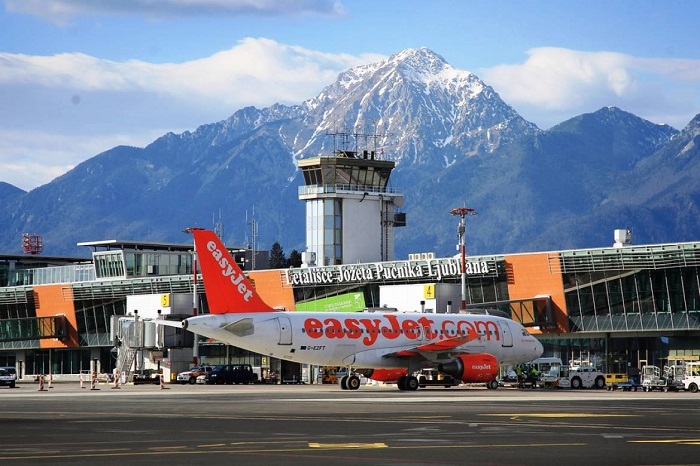
Major European and UK airlines operating flights connecting to Ljubljana airport, including low-cost carriers such as Easyjet and Wizzair. Ljubljana Airport is about 30 minutes from the city center, and can be reached by public bus 28, which runs the route between Ljubljana bus terminal and the airport.
Getting around Slovenia (#slovenia guide)

Another benefit to Slovenia being so small is that it is very easy to get around by public transport, especially when the transport network is as efficient as Slovenia’s. All major tourist attractions and attractions are easily accessible by public transport.
When traveling between attractions in Slovenia, you will be free to choose the types of transport that suits your travel needs.
Bus (#slovenia travel blog)
Modern, comfortable bus system with roads to all cities, big and small towns. Fares from 4 euros or more/trip depending on the distance. Note that if you go on the weekend, you should book or buy tickets in advance because these days are quite crowded using public transport.

If you are not comfortable renting a car, or you do not have a driver’s license, buses in Slovenia can go everywhere and they are very comfortable. If you want to take a bus to one of the quieter rural villages, you can also take a bus.

Renting a self-driving car (#slovenia travel guide)
If you own an international driver’s license and are familiar with traffic laws, you can also rent a car from major brands such as Avis, Budget, Europcar, Hertz for only 40 Euro/day.
This is a country with a wild land that is inviting, beautiful and hard to get lost, so rent a car and see it all on your own. The two best car rental sites in Slovenia are Sixt and RentalCars.
Taxi
It is the safest means of transport if you are traveling alone or do not know the way. However, you should also consider because the taxi price here is quite expensive.
Bicycle

The most environmentally friendly and cost-effective means of transport, which will be very suitable for traveling short distances in the city. Cycling through the streets looking at the surrounding scenery is also very romantic and interesting. You only have to pay from 3 Euro/hour or 17Euro/day to rent a bike in areas like Ljubljana, Bled, Bovec and Piran.

Train

Surprisingly for such a small country, Slovenia has an efficient rail network. There is a wide range of services, including slow (LP) and Intercity (IC) trains, as well as faster Intercity trains serving the Ljulbjana – Maribor line. Eurail and InterRail passes are valid on Slovenian railways.
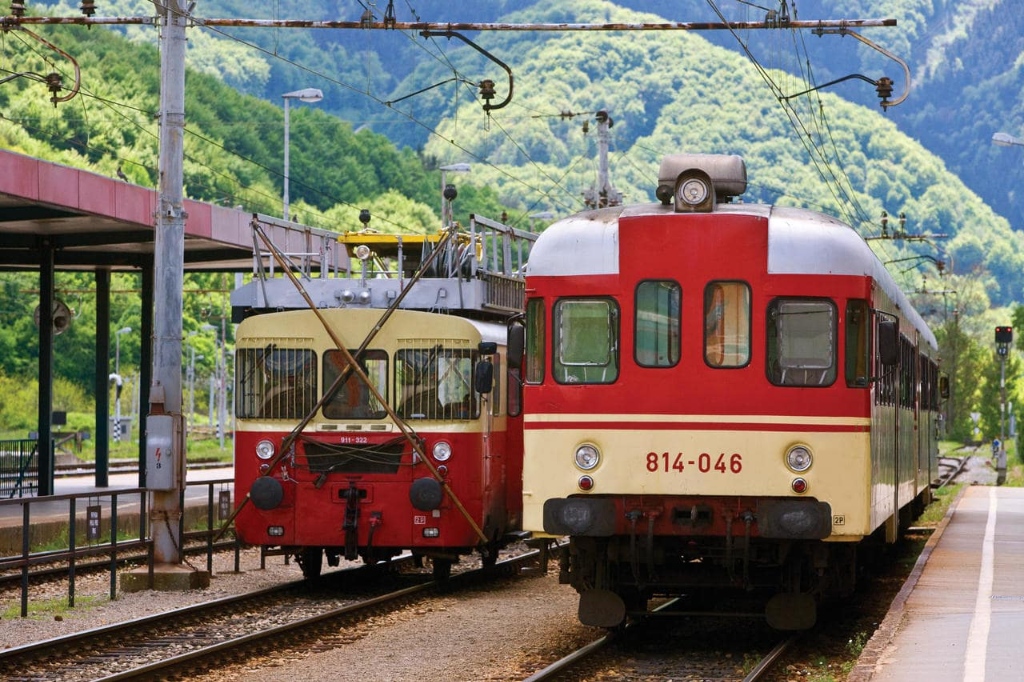
Where to go and what to do in Slovenia?
The capital Ljubljana
The most famous tourist destination that anyone traveling to Slovenia cannot ignore, of course, is the capital Ljubljana. This city possesses a beauty that is not inferior to cities like Paris or Venice. The capital Ljubljana lies along the banks of the same name peaceful river. Although the city of Ljubljana is small, it is quite vibrant and bustling. Especially when night falls is the best time to explore Ljubljana.




A lively green city that combines the charm of a small capital with the confidence of large European cities. Ljubljana is a green capital with a riverside area with picturesque bridges and a central market thanks to the distinctive look of the great architect Jože Plečnik. The city of thousands of events is surrounded by parks and protected natural areas.
The romantic capital Llubljana where the river of the same name flows through, associated with ancient historical vestiges such as dragon statues scattered on the streets, beautiful architecture from the Baroque period, and sculptures from centuries past.



The center of the city is the Old Town Square where many cultural activities and entertainment take place, and when you try to climb the castle of Llubljana or the clock tower, you will admire the breathtaking views of the city in sight.
December is the festival month in Ljubljana, where its squares, streets, bridges and waterfront transform into the city’s most central and vibrant social hub. The space-themed outdoor Christmas decorations were designed by renowned artist Urban Modic known for their splendor. The Christmas market with food and drink at beautiful wooden stalls is the central social event accompanied by children’s activities and free concerts. You can also take a Christmas boat ride on the Ljubljanica river, which is a great experience.

Julian Alps

If you’re looking for something high enough to see the Slovenia view, there’s probably no better place than the summit of Julian Alps. This is a majestic mountain peak located in Triglav National Park. Visiting the top of Mount Julian, you will have the opportunity to experience a lot of interesting entertainment activities such as trekking, skiing, exploring majestic waterfalls…
Ancient town of Piran
Piran is undoubtedly the most beautiful town on the Slovenian coast. However, it is a quiet and peaceful place, not crowded even during the summer months. The town is not a typical “tourist” destination, it is for those who are looking for a relaxing break along the coast, perhaps enjoying a delicious meal at one of the local restaurants in the area while watching the sunset and listening to romantic music – the sound of the ocean waves or getting lost in the charming streets, chatting with locals and learning about historical sites.

The beautiful old town bordering the Adriatic Sea with winding alleys, red-tiled houses with Venetian architectural style. Besides, do not forget to visit Tartini Square, St George’s Church, and enjoy fresh seafood dishes.
Lake Bled

Bled is a lakeside town of the same name, Lake Bled is the most stunning and iconic site in Slovenia. The town itself is a paradise for those who live there, overlooking the lake and enjoying the fresh air of the forest and known for its spas and resorts. Lake Bled and its cliff-top castle are among the most beautiful alpine resorts in Europe.
Traveling to Slovenia without visiting Lake Bled is a pity. This is a lake with beautiful natural scenery and extremely charming. Summer is the best time to visit Lake Bled. In addition, you can also come here in winter. When the lake is frozen, it creates a beautiful beauty like a fairyland.


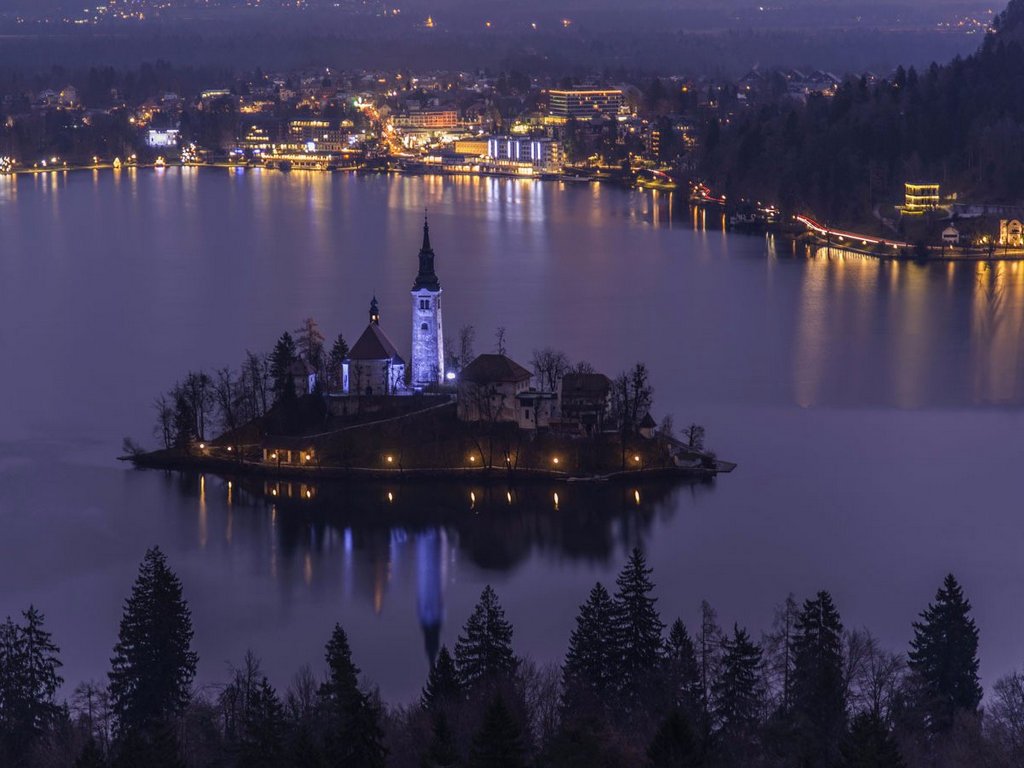
Lake Bled is a popular tourist attraction in Slovenia and a must-see once you’re here. The romantic landscape is created from the clear blue water under the lake, the silhouette of the trees along the shore and the undulating mountains hidden in the green trees.
In winter, this place turns into a frozen land when the lake surface freezes and the tree branches are covered with snow. For a full view of the scenery, you can climb to the top of the mountains by the lake, cruise on a traditional Pletna boat or climb a castle perched on a cliff.

Bled Castle sits atop a cliff, 100m above the lake and is sure to offer stunning views of the surrounding area. There is a museum inside that documents the history of the lake from its earliest times to Bled’s development as a resort in the 19th century.

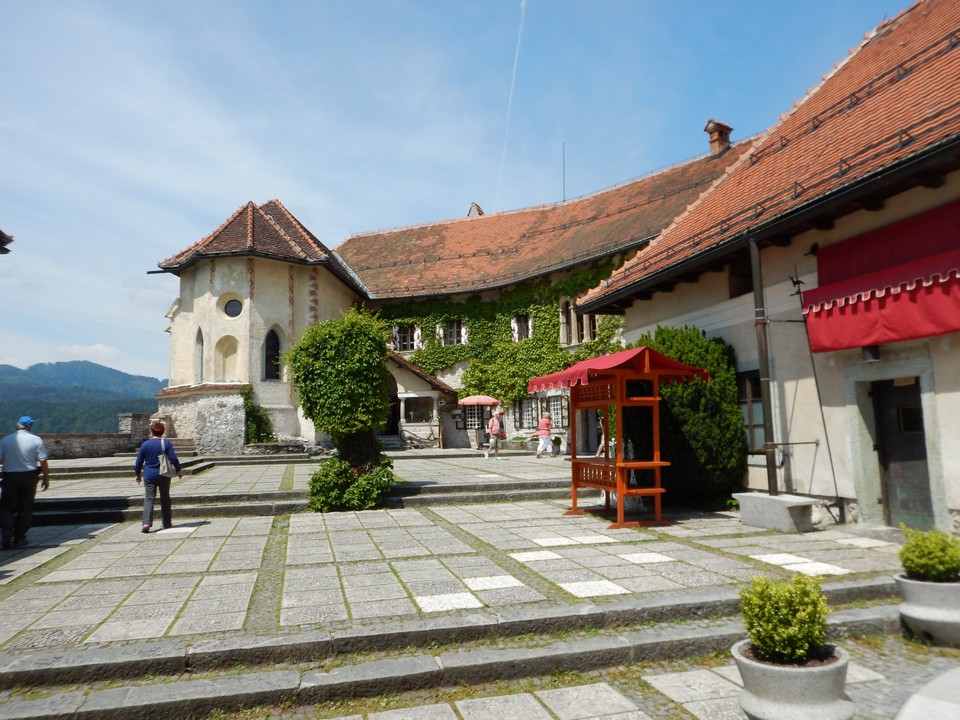
Vintgar Gorge
Located in Triglav National Park, Vintgar is a 1.6 km long gorge carved by the Radovna river, the water is as clear as jade. It was discovered in 1891 and opened to visitors for the first time two years later. It is said that the name “Vintgar” is derived from the German word “Weingarten”.

Long boardwalks, clinging to the cliffs with rocks formed just a few meters above the river with rapids, waterfalls and pools, create stunning views. Moreover, it gives you a sense of adventure. Thanks to the special climate, the vegetation and the number of plant species here are very rich and have been studied by botanists for more than a hundred years.

Vintgar Gorge is one of the most popular half-day trip, about 4 kilometers northwest of Bled town. The highlight is the 1600m wooden walking path through the gorge, built in 1893 and continuously rebuilt since. It crosses the Radon River swirling four times past rapids, waterfalls and pools before reaching the 16m high Šum Falls.
Bohinj

Bohinj is a metropolis with lots to see and do! Its capital town Bohinjska Bistrica is nestled in a verdant jungle valley. The Bohinj railway that takes you as far as Italy passes through this area and offers some of the most stunning views of the high mountains. Lake Bohinj is also one of the most peaceful and picturesque places in Slovenia, and is ideal for hiking and relaxing in the spring. When you get there, be sure to visit the Savice waterfall and the Sava river, which in Slovene means the end of the world. Lake Bohinj is just a 30-minute drive from Lake Bled.
Maribor
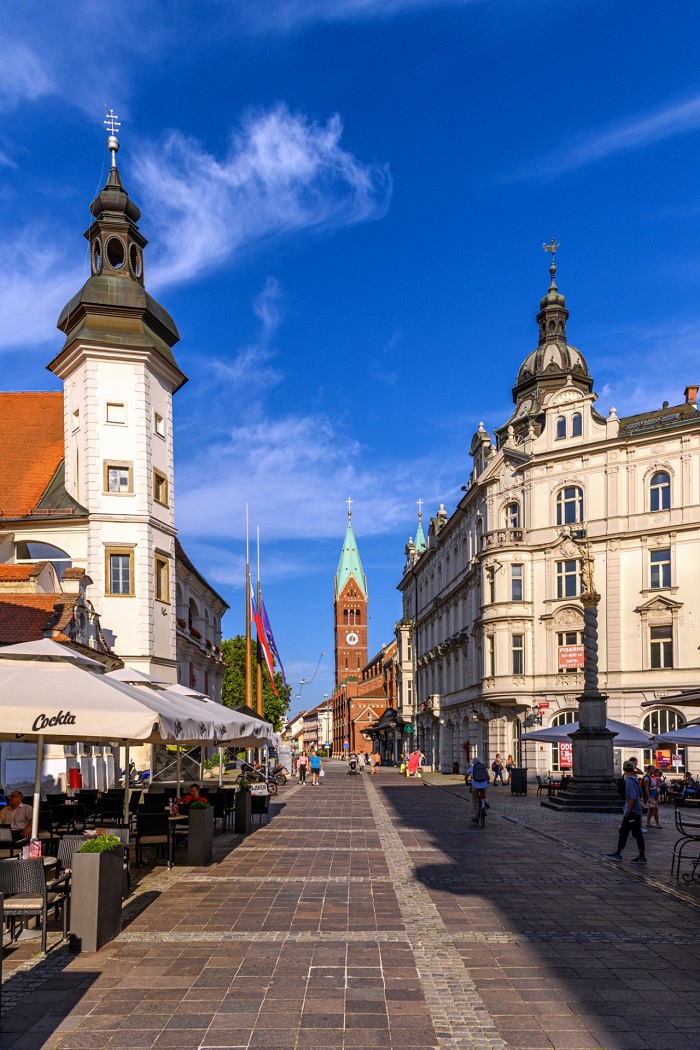
Slovenia’s second largest city looks like a renaissance painting. The world’s oldest vine, known as the Old Vine, grows outside a house in the city center. Wine makes the heart of this region and the city itself is a place worth exploring.
Bovec
Bovec sits on the edge of the beautiful Triglav National park, which is reason enough for you to visit and stay for a few days. The view of the jagged and high mountains from every street is breathtaking. The people of this town are famously fond of sports, and all kinds of sporting events take place all year round. Bovec is a famous Slovenia tourist destination , where the filming of “The Chronicles of Narnia: Prince Caspian”.
Visit the ancient castles
Like many other European countries, Slovenia also owns many beautiful and ancient castles. Your trip to Slovenia will definitely be more interesting and memorable when you take the time to visit these castles. The most famous one is Predjama Castle. The 700-year-old castle is perched on a 123-meter cliff, right at the entrance of a mountain cave. Tours of the castle are open year-round, except for the underground tour which will be restricted from May to September as this is the hibernation season for bats. If you come in July, you will have the opportunity to watch the medieval dueling tournament held here.

Skocjan Caves
The cave is located in the Karst region, in the limestone plateau stretching from southwestern Slovenia to Italy. It is a UNESCO heritage site and the tallest cave in Europe. Inside this huge cave are stalagmites, stalactites with many impressive shapes, rapids and waterfalls, and is also home to 15 species of bats.
What to eat?
Slovenian cuisine is influenced by neighboring countries such as Austrian sausages and strudel pastries or Hungarian goulash and beef stew. The influence of German cuisine in Slovenia, Southern Slovenia bordering Italy introduced many Italian dishes such as pasta, rice risotto and especially pizza.

The traditional Slovenian breakfast consists of fresh bread, a cup of milk, butter, honey and apple. This type of breakfast is not popular anymore.
Bread plays a special role in Slovenian cuisine. There are many varieties of bread, made of whole grain flour, rye, corn, buckwheat, flour, oats, which can also be a mixture of two or more flours. Moreover, it is also added to various nuts, even onions, olives or walnuts.

Traditionally, most Slovenian meals start with soup and are eaten all year round. You can find a multitude of soups – mushroom soup, chicken soup, barley soup, “jota” (soup with sauerkraut/turnip, beans, potatoes and smoked pork or sausage), bean soup, mixed vegetable soup but most popular is beef broth with noodles. Furthermore, beef soup is also a popular Sunday appetizer in many Slovenian homes. Beef soup is a clear, full-flavored broth served with noodles or dumplings and sprinkled with parsley.

“Mineštra” (minestrone) or stew dish is also very typical and is a Slovenian favorite, cooked many times with pork bones, ribs, sausages or another type of meat.
The main course usually consists of meat and a favorite side dish is the baked potato “pražen krompir”, but it can also be rice or “štruklji”. The interesting thing about “štruklji” is that they can also be served as a dessert. Salads are also an important part of lunch with pumpkin seeds or olive oil as a dressing.
In early spring is appreciated a dandelion salad. In addition, other vegetables are also used in different ways. Very popular is cabbage, used as sauerkraut served with sausages or baked potatoes, sweet and sour cabbage and raw cabbage salad.

Slovenes are very fond of fish and seafood. Salmon “postrv” is a fish from the Soča River and is traditionally prepared in a variety of ways by rolling it in buckwheat or cornmeal and frying it. Fish is usually served with boiled potatoes and mustard greens.

Potica is an ethnic dessert, a yeast-based dough roll with a choice of fillings (wormwood, walnuts, crackers and poppy seeds). Potica is a typical Slovenian Easter dish. It is also commonly placed on Slovenian tables at Christmas and other holidays.

A traditional sponge cake in Slovenia. It is made from different types of flour (usually yeast dough), inside is filled with nuts such as walnuts, poppy seeds, tarragon.
There are also cakes such as Blejska kremna rezina or Kremšnita (Bled cream cake is a dessert from the town of Bled – a layer of vanilla custard topped with whipped cream and sandwiched between layers of pastry). Prekmurska gibanica is a pastry filled with poppy seeds, walnuts, apples, and cheese and topped with cream.

Goulash soup: You can find Goulash soup anywhere in Slovenia. The main ingredients of this dish include beef, vegetables, onions, red bell pepper powder, other spices… All the ingredients are thinly sliced and then seasoned with just the right amount of spiciness, just the right seasoning… When enjoying, you can serve the soup with bread, boiled potatoes, pasta.
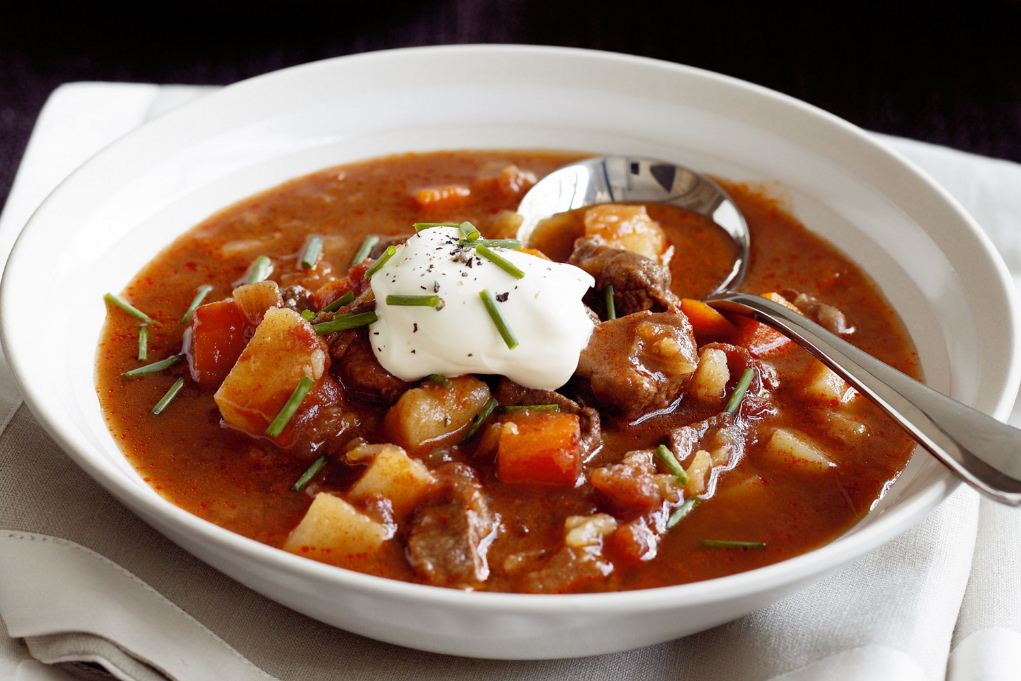
Burek: A popularly pastry sold on the streets and shops in Slovenia, Burek pastry originally had a traditional filling of cheese or meat, then began to have many different fillings such as sausages, cabbage… Burek’s appearance is quite similar to a multi-layered sandwich, the base and surface of the cake are crispy and golden, but the inner layer of the cake is richer and softer.
Carniolan sausage: is another traditional dish on the table of local people. The ingredients are quite simple including pork, bacon fat, garlic, pepper, salt but when you enjoy it, you will be startled by its delicious taste. And it would be even better to eat with a loaf of bread and enjoy some wine.

Prekmurje layer cake (gibanica): is a cake that can be found on every street corner here. The cake has many thin layers overlapping each other. The top and bottom of the cake are quite crispy, each inner layer includes poppy seeds, cheese, walnuts, apples, meat, and more, soft and luscious.
Žganci: is a popular porridge dish, considered a “farm food” of Slovenians. Ingredients usually include buckwheat flour, cabbage, chicken, mushrooms, sometimes adding a little milk for flavor. They use Žganci as the main course in their daily meals.

Prežganka soup: originated in the Trieste countryside but today is gradually becoming popular throughout the country. People will roast the flour until it turns brown, then add water and salt, when the mixture boils, add eggs and beat to create an eye-catching yellow color for the soup.
Pizza: Pizza is a fairly popular dish in the world, but this dish in Slovenia is impressively large, maybe the size of a tray. The base and edges of the cake are toasted crispy but the inside is extremely soft. Prominent on the surface of the cake is a thick layer of cheese mixed with a very attractive tomato sauce. You can choose delicious seafood fillings such as squid, shrimp, fish, oysters, crab, mussels…
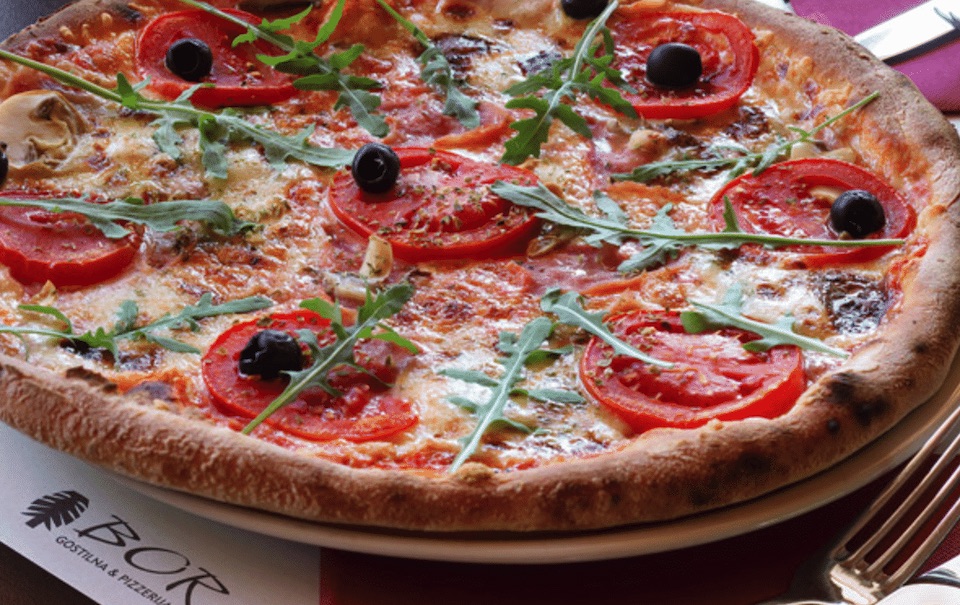
Štefani pečenkan: looks like a loaf of bread on the outside, but it’s actually a long loaf of meat, inside has a boiled egg that has been peeled and left whole. When eaten, it will be cut into slices to taste the harmony of the meat mixed with eggs. This dish is often served during the holidays, especially Easter.
Žlikrofi: small and pretty, all of them like squishy cakes. This dish originates from the Idrija region, the outer shell is made from a thin and soft rolled noodle, the inside will have onions, potatoes, spices, topped with a little sauce. They are usually eaten on their own or with meat dishes.

Many Slovenian towns and cities host culinary and social events, of which a unique street food event called “Odprta Kuhna” (Open Kitchen) is well known. The feature of this event is that you can experience freshly cooked dishes prepared by Slovenian chefs right in front of you. In addition to good food, it’s also home to great live music and entertainment.

Where to shop?
Souvenirs, clothes, shoes, and electronics can all be found easily at traditional markets or shopping malls here. You can refer to some reputable shopping addresses below:
- Central Market: Vodnikov trg, Ljubljana
- Qlandia Nova Gorica: esta 25. junija 1A, Nova Gorica
- Galerija Emporium: Prešernov p. 5 a, Ljubljana
- BTC City: artinska cesta 152, Ljubljana

Where to stay?
For convienience for traveling around Slovenia, we highly recommend you book a hotel in the capital city of Ljubljana. And below we recommend more best budget, mid-range and upscale hotels with good ratings and reviews you can refer to.
- Grand Hotel Union (Agoda.com or Booking.com)
- Hotel Cubo (Agoda.com or Booking.com)
- City Hotel Ljubljana (Agoda.com or Booking.com)
- uHotel (Agoda.com or Booking.com)
- Radisson Blu Plaza Hotel Ljubljana (Agoda.com or Booking.com)
- Ahotel Hotel Ljubljana (Agoda.com or Booking.com)
- InterContinental Ljubljana (Agoda.com or Booking.com)

Check out more top hotels in Ljubljana on Agoda.com or Booking.com.
Tips
- Currency: Slovenia is an EU country that uses the Euro. So the Euro is a strong and universal currency that is easy to exchange anytime, anywhere.
- Passport: Due to Slovenia is in the EU it follows EU law when it comes to visas. Meaning, if you’re in the EU, you can travel to and around Slovenia visa-free and stay for as long as you like! Slovenia is part of the Schengen Agreement, so travel to Slovenia requires a passport Schengen.
- Is Slovenia safe? Slovenia is quite safe, crime is minimal however if going out in the capital, be careful about your money and safety, Slovenian people are kind and friendly.

Ljubljana blog: Some best day tours, trips, activities and transfer services, tickets in, from and to Ljubljana you can refer to
- Best of Slovenia Day Tour from Ljubljana
- Ljubljana and Lake Bled Whole Day Tour from Zagreb
- Ljubljana Food Tour
- Ljubljana and Bled Small Group Day Tour to Slovenia from Vienna
- Bled Fairytale Tour from Ljubljana
- Slovenian Coast Day Tour from Ljubljana
- Ljubljana Card
- Ljubljana’s Historical City Center & Castle Tour
- Ljubljana Food Walking Tour
- Ljubljana Wine Tour
Read more Slovenia guide here. And Ljubljana travel blog — The fullest Ljubljana travel guide & what to do in Ljubljana for first-timers.

